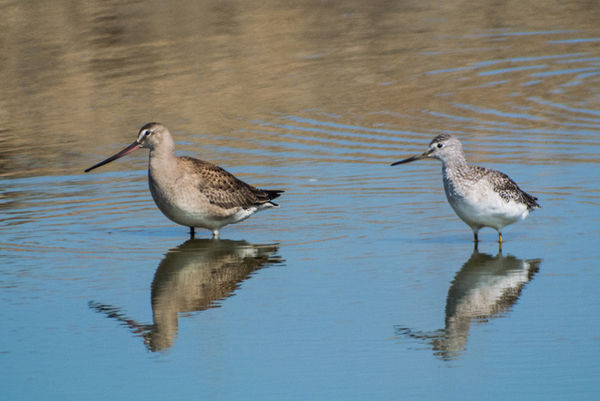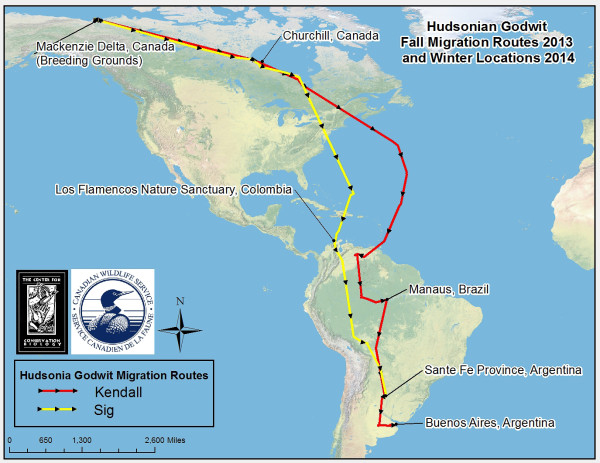 Hudsonian Godwit
Hudsonian Godwit
Credit: Len Blumin via Flickr
You may have heard about the Center for Conservation Biology before, particularly if you regularly visit this blog. They were the organization behind the fascinating satellite tracking program for migratory Whimbrels, which we’ve blogged about extensively in the past (including here, here, and here).
As it turns out, they’re continuing their great work and now expanding to other species. The Hudsonian Godwit (67% of which breed in the boreal forest) is one of the longest migrating birds known around the world. After breeding over the summer up in the boreal and arctic regions of North America, they typically fly all the way to the southern reaches of South America to winter. It’s a natural marvel to say the least and, as of now, something we can track and follow from the comfort of our own homes and office.
The Center tagged two Hudsonian Godwits over the past summer up in the Mackenzie River Delta of the Northwest Territories. This is a huge breeding ground for numerous boreal birds—godwits being no exception. After staging for a few weeks near Churchill, Manitoba and the Hudson Lowlands—a birder’s paradise and a place I was fortunate enough to visit with some folks from Audubon this last summer (documented on the blog here, here, and here)—the two godwits embarked on an epic flight all the way to South America.
 Migrations of tagged godwits Kendall and Sig
Migrations of tagged godwits Kendall and Sig
Credit: Center for Conservation Biology
You can read the full details about their captivating journey here >

